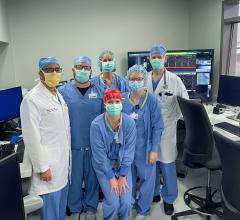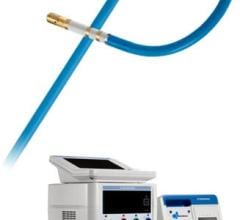
July 7, 2016 — Abbott recently announced positive results from three clinical studies investigating the benefits associated with focal impulse rotor modulation (FIRM)-guided rotor ablation for atrial fibrillation. The investigator-sponsored studies, which evaluated the use of Abbott’s RhythmView technology, were presented at the Cardiostim-EHRA Europace 2016 conference, June 8-11 in Nice, France.
FIRM-guided therapy enables physicians to identify and locate rotors – unique patient-specific sources that sustain serious heart rhythm disorders, including atrial fibrillation. With the ability to visualize individual rotors, physicians can tailor treatment approaches for each patient.
“The latest data presented at Cardiostim adds to a growing body of clinical evidence in support of the FIRM-guided approach in combination with conventional ablation, with the goals of optimizing treatment planning for atrial fibrillation and improving long-term results for our patients,” said Prof. Stefan Spitzer of the Praxisklinik Herz und Gefäße in Dresden, Germany, who authored one of the data presentations at the conference. “I look forward to additional analyses that further investigate this important therapy option.”
The studies presented at Cardiostim investigated the benefits associated with FIRM-guided rotor ablation when combined with the traditional procedure for atrial fibrillation. Key findings include:
- Spitzer presented results from 58 patients finding 80.8 percent of patients free from atrial fibrillation at 12 months post-treatment with FIRM-guided ablation for redo cases of persistent atrial fibrillation, with 83 percent of patients having long-standing persistent atrial fibrillation;
- Tamas Szili-Torok, M.D., Rotterdam, Netherlands, presented the first results from the European-Focal Impulse and Rotor Modulation Registry (E-FIRM) of 138 patients showing 78 percent and 72 percent of patients in sinus rhythm following treatment with the FIRM-guided ablation at six and 12 months, respectively; and
- Haroon Rashid, M.D., Falls Church, Va., shared data examining the relationship between stable rotors and obstructive sleep apnea in 47 patients, showing 78.6 percent of patients in sinus rhythm after FIRM-guided ablation, despite the presence of obstructive sleep apnea.
During a FIRM-guided rotor ablation procedure for atrial fibrillation, physicians use Abbott’s proprietary technology to identify and visualize rotors, important sustaining mechanisms of cardiac arrhythmias. Because arrhythmias develop as a result of both electrical and anatomic abnormalities, every patient needs to be individually diagnosed and treated. The system offers a patient-specific solution that enables physicians, for the very first time, to identify and ablate the unique sources that sustain serious heart rhythm disorders.
Read about first reports on the FIRM rotor mapping technique at HRS.
For more information: www.abbott.com


 March 27, 2025
March 27, 2025 








